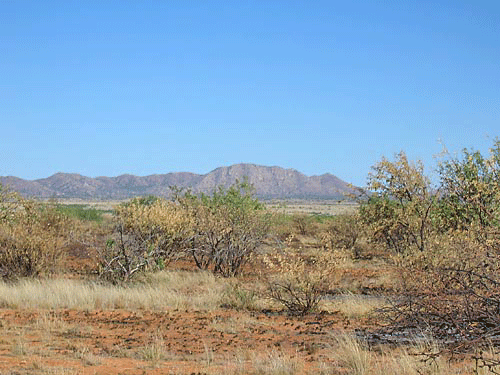
Humans may be destabilising desert ecosystems across the world, according to a new study.
REPORT BY BBC Analysis of the human impact on dryland ecosystems suggests it is “drastically changing” mammal communities.
The scientists believe that activities such as overgrazing livestock lie behind increasing local extinctions and a reduction in diversity.
The work will help to inform future conservation efforts, said lead author Maria Veronica Chillo.
The findings are published in the Journal of Arid Environments and assess how man-made disturbances affect the role of mammals in the ecosystem.
“We report for the first time that in drylands, the effect of human-induced disturbances on mammal functional diversity is negative,” said Chillo, a biologist in the Biodiversity Research Group at the Argentinian Institute of Arid Lands Research.
“Regardless (of) the characteristic of the disturbance, functional diversity is diminished.”
The review brought together evidence from 25 studies that evaluated the effect of human-caused disturbances on mammals in arid and semi-arid lands.
A total of 110 species were included in the analysis, spanning a range of animals.
Poaching, logging, grazing, fires and the introduction of invasive species were some of the ways that humans were found to have damaged mammal communities.
Although deserts and arid lands may seem to be barren places, they often support complex and fragile ecosystems in which mammals play a key role.
Some mammals dig to build nests or find food, which can bring organic material underground, enriching the soil.
Many herbivores play an important role in maintaining plant life by eating leaves and dispersing seeds.
Life in a desert can be a precarious existence for many mammals. They are constantly exposed to extreme and unpredictable environmental conditions and will be negatively impacted by anything that wipes out the resources they rely on, said Chillo.
The most damaging human activities suggested by the study
The “human activities” that the study suggests are most damaging mammals’ role in the ecosystem were those that made fundamental changes to habitat type, such as fires or overgrazing that caused grassland to turn into shrubland.
“The most negative effect is seen when disturbances change the conditions of the system (such as something that) modifies the structure or dominant plant species,” said Chillo. The team found that “old fire” from at least a year ago seemed to have a more detrimental effect than “recent fire”.
Recent fires simply wipe out plants, whereas new types of vegetation colonise areas scorched by fire that happened earlier. These new plants can be more damaging to desert mammals than no plants at all.
But the team also found that moderate grazing, while it did have a small impact on mammal diversity, had a much more limited effect.
The scientists hope to understand how humans can continue to make use of desert habitats while preserving the mammals’ contribution to the ecosystem in areas such as the Monte desert in Argentina.
“The fact that livestock production (one of the main human activities in arid lands) does not represent the most aggressive human activity to mammal functional diversity opens new avenues of research.”
The scientists hope that sustainable livestock production is a strategy that might help protect the biodiversity of these areas from human activities in the future.











